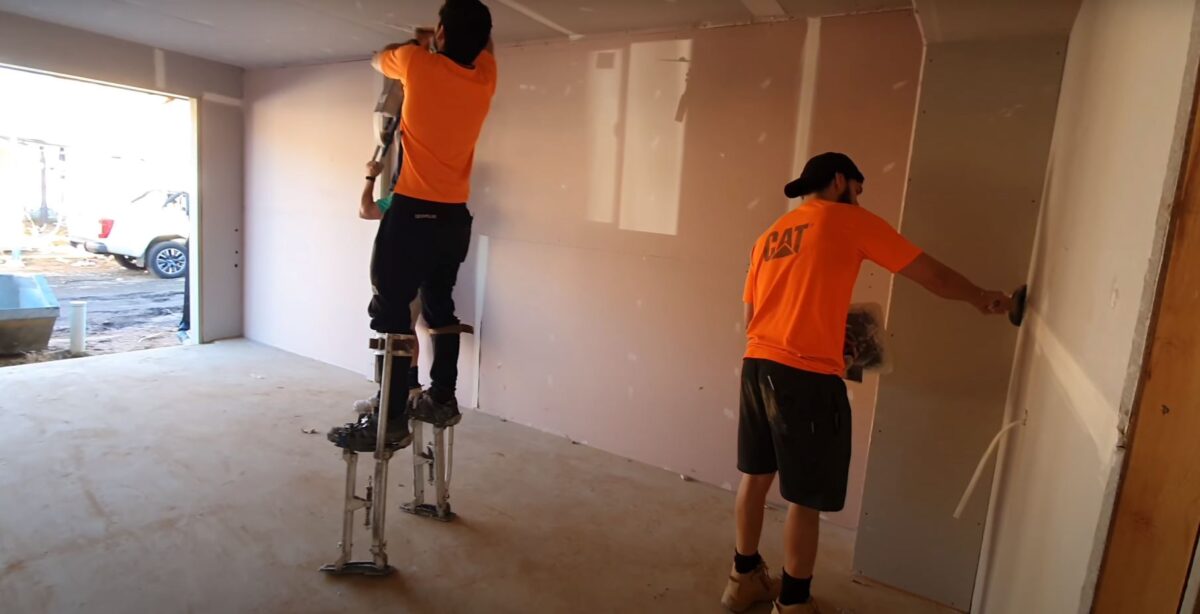When considering a home renovation or refresh, gib stopping is often a crucial component. Yet, how long it takes to gib stop a house remains a primary concern for many homeowners. Several factors come into play, from the size of the house to the complexity of the design, and let’s not forget local Auckland regulations that can potentially impact the gib stopping process.
What is Gib Stopping?
Before diving into the timeframe, let’s clarify what gib stopping entails. Gib stopping, or plastering over plasterboard joints, creates a smooth finish on walls and ceilings. This process involves filling and smoothing out any gaps, seams, and screws in the plasterboard (often referred to as “Gib” in New Zealand) before painting.
Factors Influencing the Time Taken for Gib Stopping
- Size and Layout of the House: Naturally, a larger house will require more time. A home with multiple rooms, intricate designs, or unique architectural elements may add to the duration of the project.
- Condition of Walls: Walls with a lot of damage or inconsistencies may need more extensive repair before gib stopping, thus extending the process.
- Number of Coats: Typically, gib stopping requires multiple coats. Each layer needs to dry completely before the next is applied. This drying can take anywhere from a few hours to a couple of days, depending on the conditions.
- Type of Finish: The desired finish can also impact the time. For instance, a level 5 finish, which is the smoothest, will take longer than a basic finish.
- Weather Conditions: Humidity levels, particularly in certain Auckland suburbs, can extend drying times. Ventilation and heaters might be used to expedite the process, but natural drying is often best.
Local Regulations and Gib Stopping
In Auckland, there are bylaw requirements to consider. For instance, in the suburbs of Remuera and Ponsonby, there are specific codes associated with historical preservation. It’s essential to be aware of these regulations as non-compliance might delay the project and result in penalties. Always consult with the Auckland Council or local regional councils to ensure your renovation adheres to the stipulated standards.
Why Engaging a Professional is Key
With so many nuances to consider, it’s no wonder many Aucklanders prefer hiring professionals for gib stopping tasks. Here’s why:
- Expertise: Professional gib stoppers, like the renowned Plasterers Auckland, have honed their skills over years. They can deliver a flawless finish, ensuring no seams or screws are visible.
- Equipment: Gib stopping requires a range of tools for a perfect finish. Professional plasterers have access to these, ensuring efficiency and quality.
- Knowledge of Regulations: Especially vital if you’re in a suburb with specific bylaws, professionals, particularly those from Auckland plasterers or interior plastering Auckland, are well-versed with local regulations and can navigate the complexities seamlessly.
- Speed: While gib stopping isn’t a process you’d want rushed, professionals can work more quickly than an inexperienced individual, thanks to their experience and equipment.
Time and Cost Estimates for Gib Stopping in Auckland:
Small Room (e.g., bathroom):
- Time Estimate: 1-2 days.
- Cost Estimate: NZD 600 – 1,200
Medium Room (e.g., bedroom):
- Time Estimate: 2-3 days.
- Cost Estimate: NZD 1,200 – 1,800
Large Room or Open Spaces:
- Time Estimate: 3-5 days.
- Cost Estimate: NZD 1,800 – 3,000
Factors Affecting Cost:
- Condition of Walls: If the walls require significant repair or preparation before gib stopping, costs can escalate.
- Finish Level: The highest quality finishes can significantly elevate the price.
- Accessibility: Hard-to-reach areas might require specialized equipment or additional manpower, impacting the overall costs.
- Materials Used: The quality of the plastering materials can affect the final quote. Opting for top-tier materials will likely increase costs.
- Professional’s Experience: Renowned plasterers or companies with extensive portfolios might charge a premium.
- Additional Features: Custom designs or intricate plasterwork can increase the final price.
For the best understanding of the specific costs for your project, it’s wise to reach out to professionals, such as those from Plasterers Auckland or gib stoppers Auckland.
To Conclude:
Gib stopping is an intricate process that can transform the aesthetic of a home. While it’s tempting to consider it as a DIY project, the technicalities and potential pitfalls make it wise to trust professionals. After all, a smooth, flawless finish can significantly enhance the appeal and value of a property.
Key Takeaways
- Scope of the Project: The size of the room being gib stopped plays a pivotal role in both the duration and cost. Smaller rooms like bathrooms might take 1-2 days, whereas large open spaces can span 3-5 days.
- Factors Influencing Cost: Costs can vary based on the condition of walls, the desired finish level, accessibility of the space, and the quality of materials used.
- Expertise Matters: Experienced and well-renowned plasterers or companies might charge more due to their expertise, potentially ensuring a high-quality finish.
- Materials’ Impact on Cost: Opting for higher-tier plastering materials can notably raise the gib stopping expense.
- Get Professional Insights: For a clear understanding of specific costs and project timelines, consulting professional services like Plasterers Auckland or gib stoppers Auckland is recommended.
